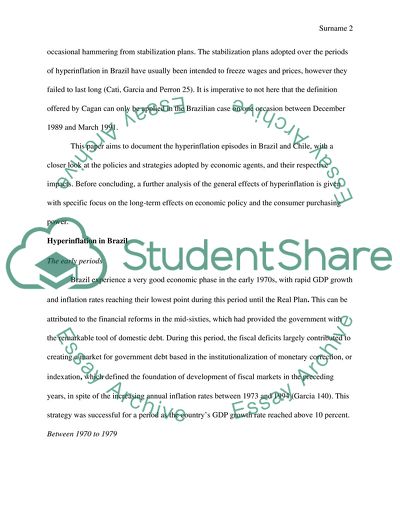Cite this document
(Hyperinflation in Chile and Brazil Coursework Example | Topics and Well Written Essays - 2500 words, n.d.)
Hyperinflation in Chile and Brazil Coursework Example | Topics and Well Written Essays - 2500 words. Retrieved from https://studentshare.org/macro-microeconomics/1821963-both-brazil-and-chile-experienced-periods-of-hyperinflation-since-the-1970s-document-these-episodes-and-describe-the-impact-of-hyperinflation-on-the-two-nations-economies-and-on-the-lives-of-their-citizens-awhat-economic-policies-did-the-two-go
Hyperinflation in Chile and Brazil Coursework Example | Topics and Well Written Essays - 2500 words. Retrieved from https://studentshare.org/macro-microeconomics/1821963-both-brazil-and-chile-experienced-periods-of-hyperinflation-since-the-1970s-document-these-episodes-and-describe-the-impact-of-hyperinflation-on-the-two-nations-economies-and-on-the-lives-of-their-citizens-awhat-economic-policies-did-the-two-go
(Hyperinflation in Chile and Brazil Coursework Example | Topics and Well Written Essays - 2500 Words)
Hyperinflation in Chile and Brazil Coursework Example | Topics and Well Written Essays - 2500 Words. https://studentshare.org/macro-microeconomics/1821963-both-brazil-and-chile-experienced-periods-of-hyperinflation-since-the-1970s-document-these-episodes-and-describe-the-impact-of-hyperinflation-on-the-two-nations-economies-and-on-the-lives-of-their-citizens-awhat-economic-policies-did-the-two-go.
Hyperinflation in Chile and Brazil Coursework Example | Topics and Well Written Essays - 2500 Words. https://studentshare.org/macro-microeconomics/1821963-both-brazil-and-chile-experienced-periods-of-hyperinflation-since-the-1970s-document-these-episodes-and-describe-the-impact-of-hyperinflation-on-the-two-nations-economies-and-on-the-lives-of-their-citizens-awhat-economic-policies-did-the-two-go.
“Hyperinflation in Chile and Brazil Coursework Example | Topics and Well Written Essays - 2500 Words”, n.d. https://studentshare.org/macro-microeconomics/1821963-both-brazil-and-chile-experienced-periods-of-hyperinflation-since-the-1970s-document-these-episodes-and-describe-the-impact-of-hyperinflation-on-the-two-nations-economies-and-on-the-lives-of-their-citizens-awhat-economic-policies-did-the-two-go.


